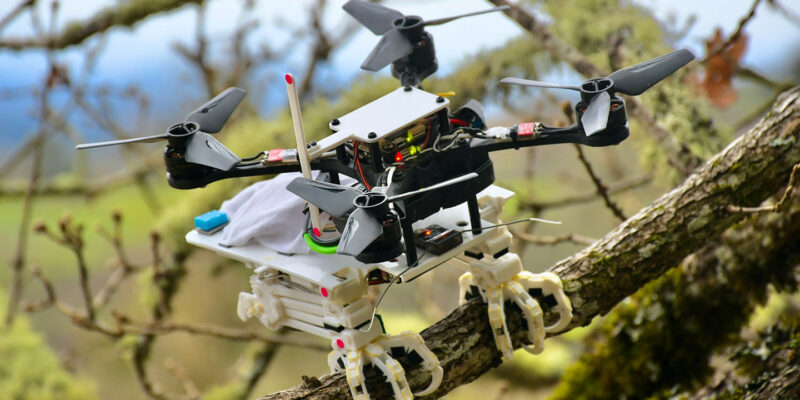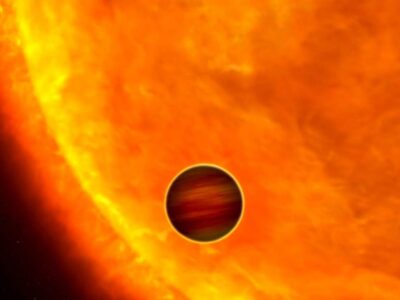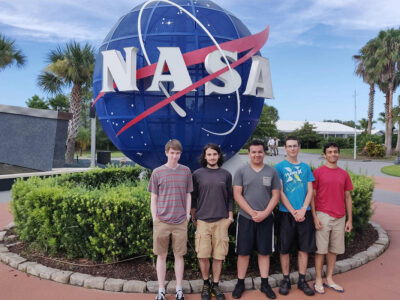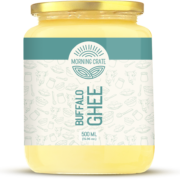Masterminds at Stanford University have been working on a robot that’s part quadrotor flying drone and part vagabond falcon. The upper half of the robot looks like a common quadrotor drone designed to fly through the air. The lower half of the drone has a brace of clawed bases – significantly different from anything we ’ve seen in the history.
On the lower half of the drone, masterminds created legs inspired by the vagabond falcon. The thing of creating the robot was to allow the flying machine to perch on a branch like a raspberry. The capability for a drone to fly and land in a tree is a significant enhancement on current drones that generally bear flat ground to take off and land. One significant challenge in the design is the horizonless variability of tree branches the robot would need to be suitable to land on while operating in the real world Catcalls make flying and landing look easy, but perching on a branch is particularly delicate to wangle into a robot able of flight. The challenge is that no two branches are likewise. Branches differ in size, shape, and texture. Some branches will be covered with bitsy sticks growing out of their face and leaves, while others might be covered in moss. Catcalls have no problem perching on any branch they choose, but designing a flying robot able of doing the same thing was a significant challenge.
The system the Stanford masterminds created is called a “ hackneyed nature- inspired upstanding grasper” docked to Hitch. The raspberry-suchlike legs allow the flying robot to move through the sky like a typical drone but gives it the capability to carry objects and perch on colorful shells like a raspberry. In their exploration, the scientists had preliminarily studied parrotlets, which is the alternate lowest pantomimist species. In that exploration, the small catcalls flew back and forth between special perches made of varying accoutrements and in varying sizes.
Perches were made from wood, froth, sandpaper, and Teflon. All were bedded with detectors that allowed the platoon to record the physical grasping force as the parrotlets landed and took off from the material. Five high- speed cameras recorded the movements of the raspberry during flight and wharf. Scientists learned commodity surprising from their exploration, discovering that the raspberry performed the same pushes no matter what the perch was made of.
During wharf, the bases handled the variability and complexity of the face texture. Every raspberry uses analogous epigonic geste, which is why the S in Hitch is for hackneyed. When designing the Hitch robot, masterminds followed a analogous approach as the parrotlet by having the flying robot approach every advancing the same way. Still, the legs of the small parrotlet would n’t work for a large quadrotor drone, so the platoon settled on the leg structure of the vagabond falcon.
The drones’3D published leg structure was perfected over the course of 20 different duplications. While the raspberry has muscles and tendons controlling its legs, the flying robot’s legs are controlled by motors and fishing line. Each leg in the system has a motor allowing it to move back and forth and a alternate motor to handle grasping capability.
The motors and fishing line were routed also to how tendons move around the ankles of a raspberry. Like in the raspberry, the robot’s legs were designed to absorb wharf impact energy and convert it into grasping force. Thebio-inspired design of the robot legs redounded in a unexpectedly strong and high- speed clinging action for the bases that can be closed in 20 milliseconds.
Hitch also has ankles suitable to lock and an accelerometer on the right bottom that knows when the robot lands and triggers an algorithm responsible for balancing the robot on the wharf face. In testing, the grasping system of Hitch was suitable to catch objects thrown by hand, including a prey dummy, a sludge hole beanbag, and a tennis ball. Ultimately, the flying robot was tested in a timber, and the masterminds plant that SNAG performed extremely well.
In the real world, it was suitable to perform so well that the platoon decided the coming step in developing the robot would concentrate on what happens before landing to help ameliorate flight control and situational mindfulness. Before settling on the final design for the robot’s bases, the platoon tested two different toe arrangements. One arrangement is called zygodactyl, characterized by a bottom with two toes in the front and two in the reverse, which is the bottom arrangement of the parrotlet.
The alternate toe arrangement is called anisodactyl, with three toes in the front and one in the reverse, which is the toe arrangement of the vagabond falcon. During testing, the platoon plant there was little performance difference between the two arrangements.
After designing a quadrotor drone able of perching on branches, design masterminds allowed of some implicit uses for analogous product drones in the future. One of the most likely scripts for drones of this type will be conducting environmental exploration. Another implicit use for this drone and its unique structure is in hunt and deliverance operations.
To make hitch more able of performing environmental exploration, the platoon attached a temperature and moisture detector and used it to record microclimate details in Oregon. Part of the provocation for designing the drone was to produce bettered tools to study the world around us.
The drone the Stanford experimenters created is significantly different from drones that utmost of us are familiar with, similar as the DJI Mavic 3 and Mavic 3 Cine drones that linked in late October. Experimenters from multiple institutions are working to ameliorate drones in large part because they’ve similar implicit in colorful fields.
Another significant challenge drone experimenters are trying to break is giving drones the capability to operate at high pets in unknown surroundings – a skill at which catcalls exceed. Combining a drone able of perching on a branch in any timber around the world with an AI system able of allowing that drone to operate in a cluttered and unknown thick timber would affect in an emotional machine indeed.















![How to solve [pii_email_af9655d452e4f8805ebf] Error?](https://themediahubs.com/wp-content/uploads/2023/02/U9rr3rhWhUvxCSyrdw3r5MZLGTsfOGbJeliDmntx-1-1-400x225.jpg)



![How to solve [pii_email_af9655d452e4f8805ebf] Error?](https://themediahubs.com/wp-content/uploads/2023/02/U9rr3rhWhUvxCSyrdw3r5MZLGTsfOGbJeliDmntx-1-1-180x180.jpg)
Comments